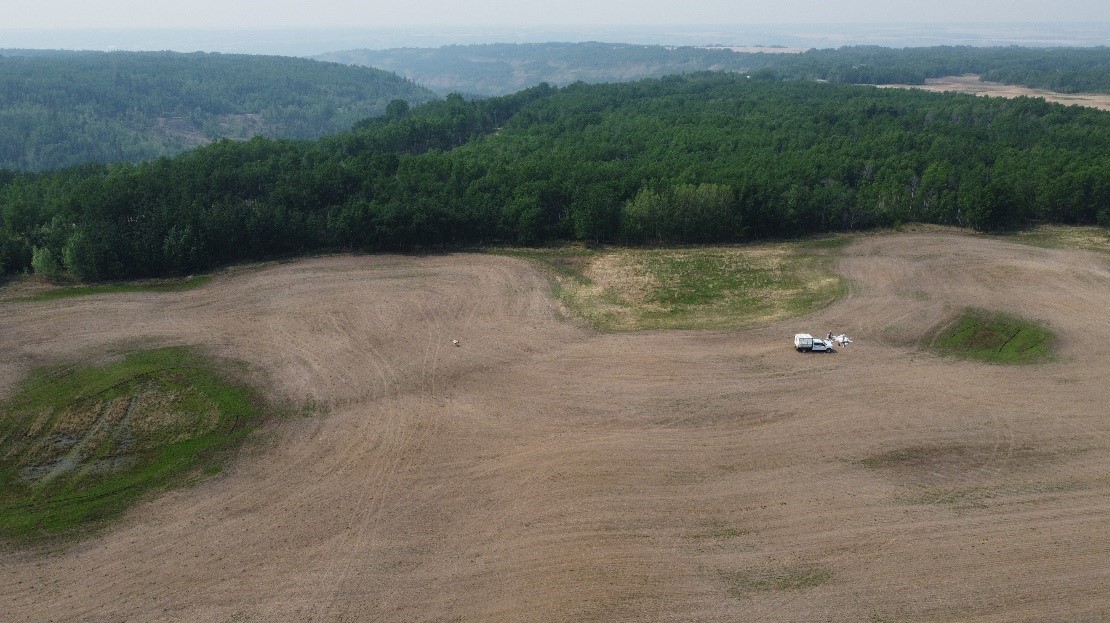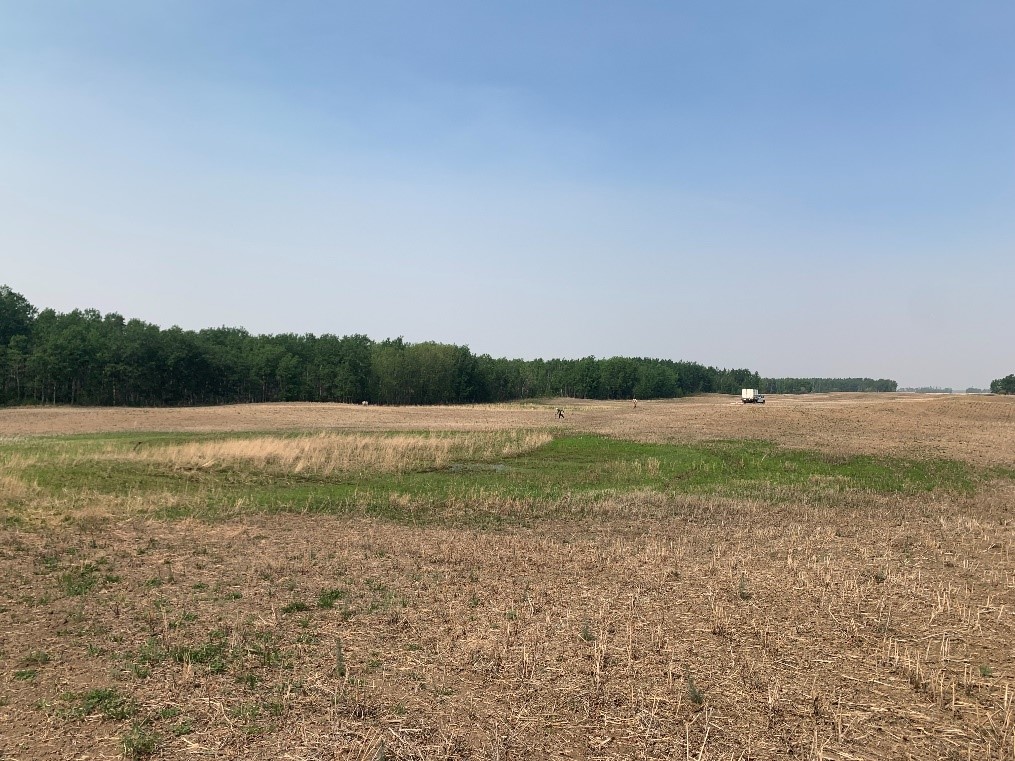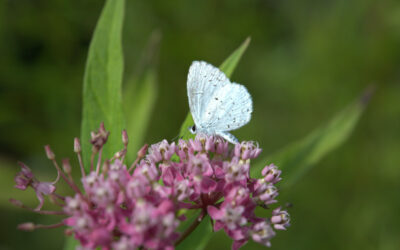Community leaders from ALUS Northern Sunrise, Tree Canada and Alberta Conservation Association leverage new partnerships to accelerate environmental and community impacts

Aerial view of the ALUS Northern Sunrise tree planting project site. Credit: Katie Bartman.
Sometimes, circumstances come together to forge an outcome even greater than initially planned. That’s the case in Northern Alberta, where a long-gestating Tree Canada project found itself with an excess of seedlings in the tens of thousands. Quick thinking, adept communication and a spirit of reciprocal benefit ensured that more than 50,000 seedlings accelerated an ALUS Northern Sunrise project.
Back in 2013, Gerard Fournier, Forestry Specialist for Tree Canada, and Alberta Conservation Association staff submitting a comprehensive project proposal for a planting project west of the Hamlet of North Star at ACA’s Northstar Conservation Site. Due to financing setbacks, the planting was postponed. Fast forward to summer 2022, Gerard receives a call from Tree Canada letting him know that the funding for the 120,000 trees had been secured.
Landscapes persist in a constant state of change, and when Gerard and Taylor Lund, Land Biologist with Alberta Conservation Association (ACA), did a site visit for the proposed planting, they found the ACA site’s circumstances changed from 2013. There was a lot more natural tree growth in 2023., “Taylor said, ‘well, you know, we really only have room for about 70,000 trees’,” says Gerard. “So, I’m like, do you know anybody around that needs another 50,000 trees?”

Tree seedling at the ALUS Northern Sunrise project site. Credit: Katie Bartman.
Taylor was quick to think of ALUS and her colleague Katie Bartman.
“Obviously, we don’t want to waste trees, but we don’t want to just plant them for the sake of planting. We have certain wildlife species and site-specific conditions to bear in mind when deciding on the density to plant,” says Taylor. “As you know, it takes time to develop these projects, and Katie has been working really diligently in the community to come up with project ideas. So, a kind of light bulb went off, and I wondered if there’s a possibility that Tree Canada could work with ALUS.”
Katie had been working with local landowner, Neil Harpe, to develop an ALUS project that would utilize perennial grasses to aid ecosystem regeneration and the re-establishment of historical wetlands on the land. The long-term goal of the project would be establishing the right conditions for wildlife to create a resilient ecosystem.
“With the help of Tree Canada, now we’re really able to speed up the process of putting wildlife on the land,” says Katie. She estimates that planting the seedlings from Tree Canada advanced the site conditions by about five or ten years.

ALUS Northern Sunrise tree planting project site with historical wetland complex. Credit: Katie Bartman.
“Trees are huge for their filtering capabilities, slowing the flow of water,” says Katie. “The project will have a big effect due to its proximity to a significant watercourse for our County and the town of Peace River.”
This sort of partnership, new, improvised and driven by a network of community leaders like Gerard, Taylor, Katie and Neil, means big gains for the environment, the community and future generations.
For Neil Harpe, the ALUS Northern Sunrise participant on whose land the project was established, this was an ideal outcome.
“It’s not ideal farmland,” says Neil of the project site. “It’s a pain because it’s hilly; there’s wet areas; . It’s not really profitable for anybody to cultivate it over the long term.”
Neil sees the tree planting project as a much better use of the land.
“The purpose of any land varies so much, right?” says Neil Harpe, ALUS Northern Sunrise Participant. “This project gives our kids a different perspective on land management, and they get interested in seeing the trees grow as the land gets re-established in a natural state”
Every ALUS project is more than the sum of its parts. Collaboration happens above ground, with the people and organizations that create the circumstances for a farmer to put an environmental project in the ground, and it continues afterwards, as the natural world adopts that new, wild space into its abundant network of living and non-living components, a network that provides vital ecological services to farmers and communities.



